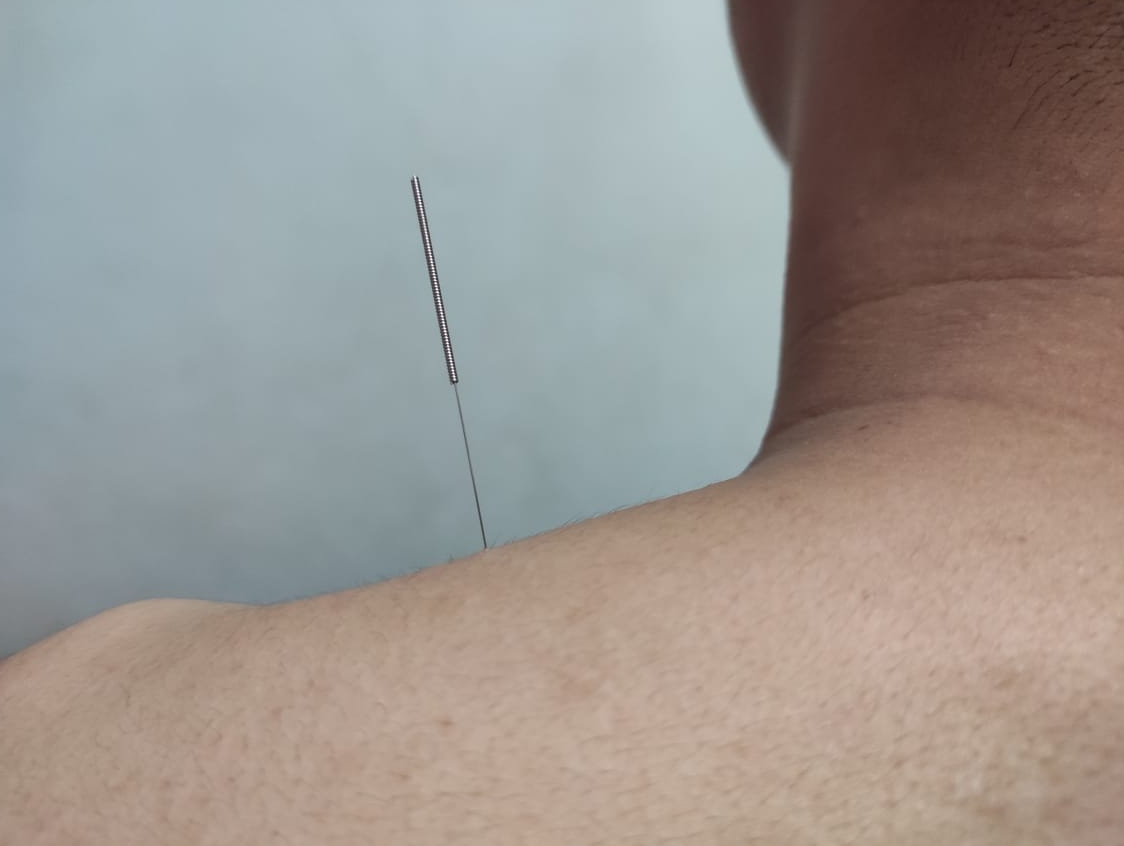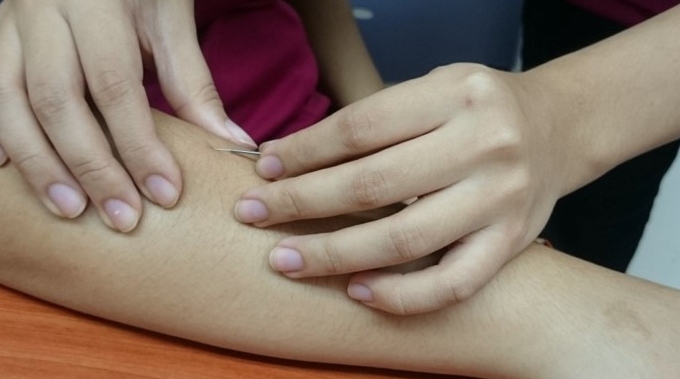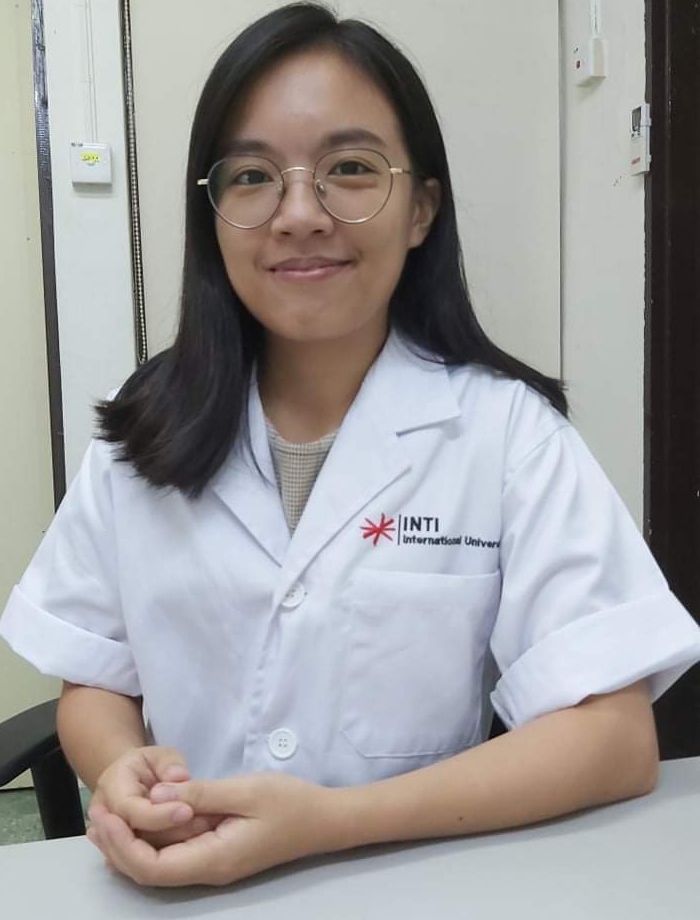When it comes to acupuncture, the prospect of having delicate, fine needles penetrate the skins may be unnerving for some people. This form of Traditional Chinese Medicine (TCM) involves the insertion of thin needles into the skin at certain “acupoints” to release endorphins, the body’s natural chemicals that reduce pain and are involved with mood[1].
According to the World Health Organization (WHO), acupuncture is prevalent in the treatment of a wide range of common conditions such as headaches, migraines, back pain, knee pain, nausea, and more. It is also frequently used for overall wellbeing, including stress management, which has sparked interest and gained favour amongst medical practitioners as a reliable treatment.

Traditional acupuncture – needle is inserted at 90 degrees into the skin to a trigger point.
Despite its exceptional health benefits, this fear of needles when it comes to acupuncture continues. Imagine if this could be changed, especially at a time when new diseases are emerging around the world.
Based on a study from the National Institute of Health in the United States of America, patients in hospital settings frequently express fear about needles, for instance, in a medical environment, at least 10% of people report having a severe fear of needles that results in avoidance, discomfort, and/or disability[2].
Two lecturers from the Faculty of Health and Life Sciences at INTI International University may have a solution that can address needle phobia-related issues and urge patients to seek treatment. In a recent study conducted by Yong Yii Pin and Leong May Ho, the superficial needling method is painless and more effective in relieving shoulder pain associated with trigger points.
“I have met many people who are reluctant to try acupuncture, even with one needle. The idea of getting pricked is just too scary for them. The superficial needling method Qing Long Bai Wei (Green-Blue Dragon Shaking Its Tail) method is not as painful as the conventional acupuncture and gives immediate pain relief in the injured area,” said Yong.

Superficial acupuncture manipulation – needle inserted obliquely 15 to 20 degrees to the skin and moved with Qing Long Bai Wei method.
She further explained that combining the superficial needling method with Qing Long Bai Wei manipulation, which is known as one of four needling methods that can promote qi flow along channels to treat pain and masses by stagnation of qi and blood.
Meanwhile, Leong shared that the conventional needling treatment often gives a tingling sensation and mild pain to a patient, which shows that the treatment is working.
“Patients do not have to be in pain for the treatment to be effective. Superficial needling allows patients to be in their best condition while enjoying the treatment,” added Leong in her research with Yong.
Published in the Journal of Chinese Medicine, their research gathered participants aged 18-40 years old from TCM Treatment Centre at the INTI International University campus in Nilai, to check trigger points on the shoulder that disrupted qi flow.
Yong also pointed out that the shoulder is a common location for myofascial presentation with trigger points on the upper and middle trapezius and deltoid muscles.
“An acute injury in the shoulder can occur with trigger points or hard nodules, especially when you consistently engage in low impact repetitive tasks in the long run, which is why we look at treatment on the shoulder,” added Yong.
In the research, two needling treatment methods were carried out using the same 1.5-inch size needle, but with different ways of insertion and position.

Yong expressed that the shoulder pain is significantly reduced in the superficial acupuncture group than those in traditional acupuncture, and with no painful reaction or discomfort.
When asked about her hopes for the future of TCM, she said that more studies on traditional treatments should be conducted to provide more holistic healthcare to the community, with effective integration into the national healthcare system.
“Not only will it contribute to the society in Malaysia by enhancing their rehabilitation, it will also promote public education on the potential contribution of traditional and complementary medicine for health and wellbeing,” said Yong.
[1] https://www.health.harvard.edu/healthbeat/relieving-pain-with-acupuncture